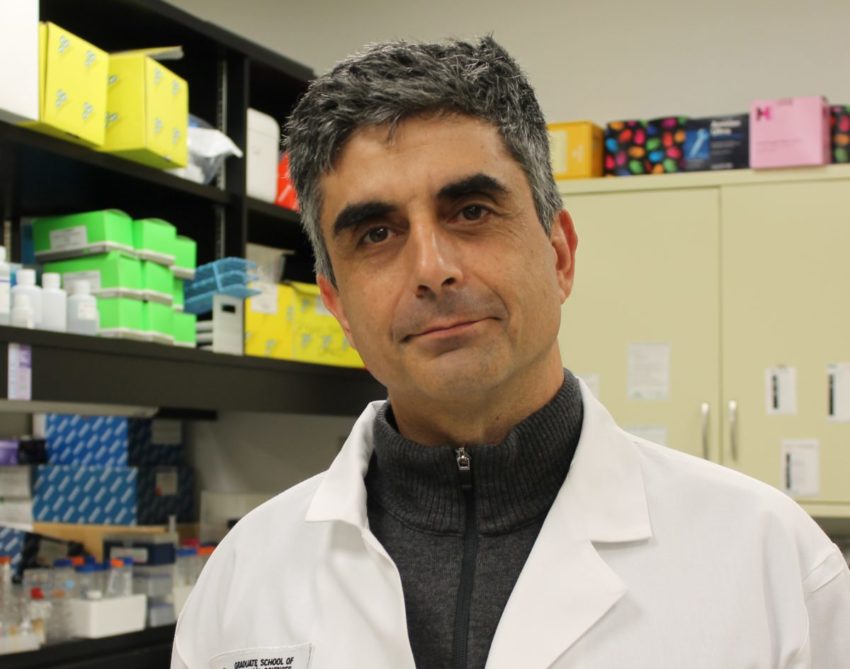UT Health San Antonio researchers and co-authors in New York state on Monday (Sept. 4) reported an innovative approach that will enable scientists to study the most common regulator of our bodies’ cells, a molecule called guanosine-5′-triphosphate (GTP).
Nature Methods, the world’s most prestigious journal for reporting novel biomedical technologies, published the team’s findings.
The discovery may prove useful in the screening of candidate anti-cancer compounds, said Rui Sousa, Ph.D., professor of biochemistry and structural biology in the Joe R. & Teresa Lozano Long School of Medicine at UT Health San Antonio.
GTP activates G-proteins, which regulate cell movement, growth, architecture and differentiation, including transformation into cancer cells.
By inserting GFP into a bacterial G-protein called FeoB, the scientists constructed sensors of GTP activity. A next step is to use these sensors in a process called high-throughput screening to find compounds that reduce GTP levels in target cells, Dr. Sousa said. Scientists hypothesize that this could be a way to treat disease.
UT Health San Antonio conducts high-throughput screening of compounds in the Center for Innovative Drug Discovery operated jointly by UT Health and The University of Texas at San Antonio.
On a basic science level, the scientists wanted to reveal how GTP levels vary and affect cellular function, Dr. Sousa said.
“You could say we have built a flashlight that now allows us to explore a big room that was previously dark,” he said. “This room is called ‘GTP biology.’ What will we find when we start exploring with this flashlight? We may find quite a lot, because GTP biology could be involved in so many processes and so many disease states.”
Dr. Sousa and Mitra Rana, Ph.D., of UT Health San Antonio are co-authors of the paper, which includes researchers from the Roswell Park Cancer Institute in Buffalo, N.Y., and the State University of New York at Buffalo.
Dr. Sousa and Dr. Rana are supported by funds from the National Cancer Institute and the National Institute of General Medical Sciences.
Publication title: Internally ratiometric fluorescent sensors for evaluation of intracellular GTP levels and distribution
Read other research news from UT Health San Antonio: New agent blocks growth of recurring breast cancer
The University of Texas Health Science Center at San Antonio, with missions of teaching, research and healing, is one of the country’s leading health sciences universities and is now called UT Health San Antonio™. UT Health’s schools of medicine, nursing, dentistry, health professions and graduate biomedical sciences have produced more than 33,000 alumni who are advancing their fields throughout the world. With seven campuses in San Antonio and Laredo, UT Health has a FY 2018 revenue operating budget of $838.4 million and is the primary driver of its community’s $37 billion biomedical and health care industry. For more information on the many ways “We make lives better®,” visit www.uthscsa.edu.


